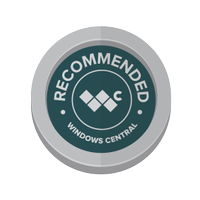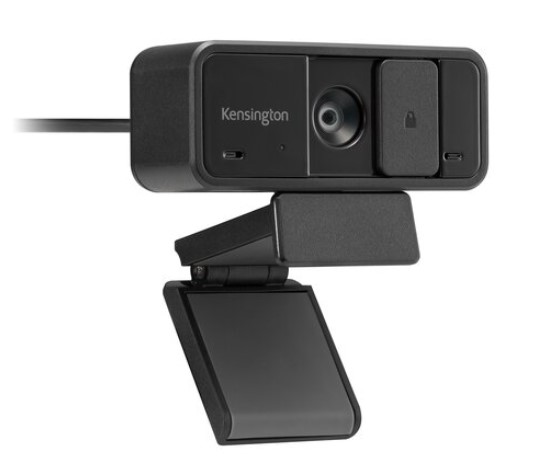Windows Central Verdict
Kensington's new affordable video conferencing accessories deliver an easy-to-use and setup kit for the home office or at work. With options for a ring light and various mounts, it all just works. However, the mics could use some work.
Pros
- +
Nice enterprise-ready kits
- +
The full HD wide-angle camera is good
- +
The ring light works well
- +
Not expensive
Cons
- -
No 4K or 60 FPS video
- -
Ring light may not be bright enough for some
- -
Wide-angle is too wide for single-person calls
- -
Microphones are not the best
Why you can trust Windows Central
Kensington is no stranger to the enterprise world with popular accessories for Microsoft’s Surface series and its line of Thunderbolt docks like the SD5700T. Today, the company announced an array of new webcams, a bi-color ring light, and several mounting options for those working at home or who need a semi-pro level setup in their office.
For this review, Kensington sent over its W1050 1080p Fixed Focus Wide Angle Webcam (K80250WW), A1010 Telescoping Desk Stand (K87651WW), and the L1000 Bicolor Ring Light with Webcam Mount (K87653WW).
Kensington Professional Video Conferencing: Price and availability
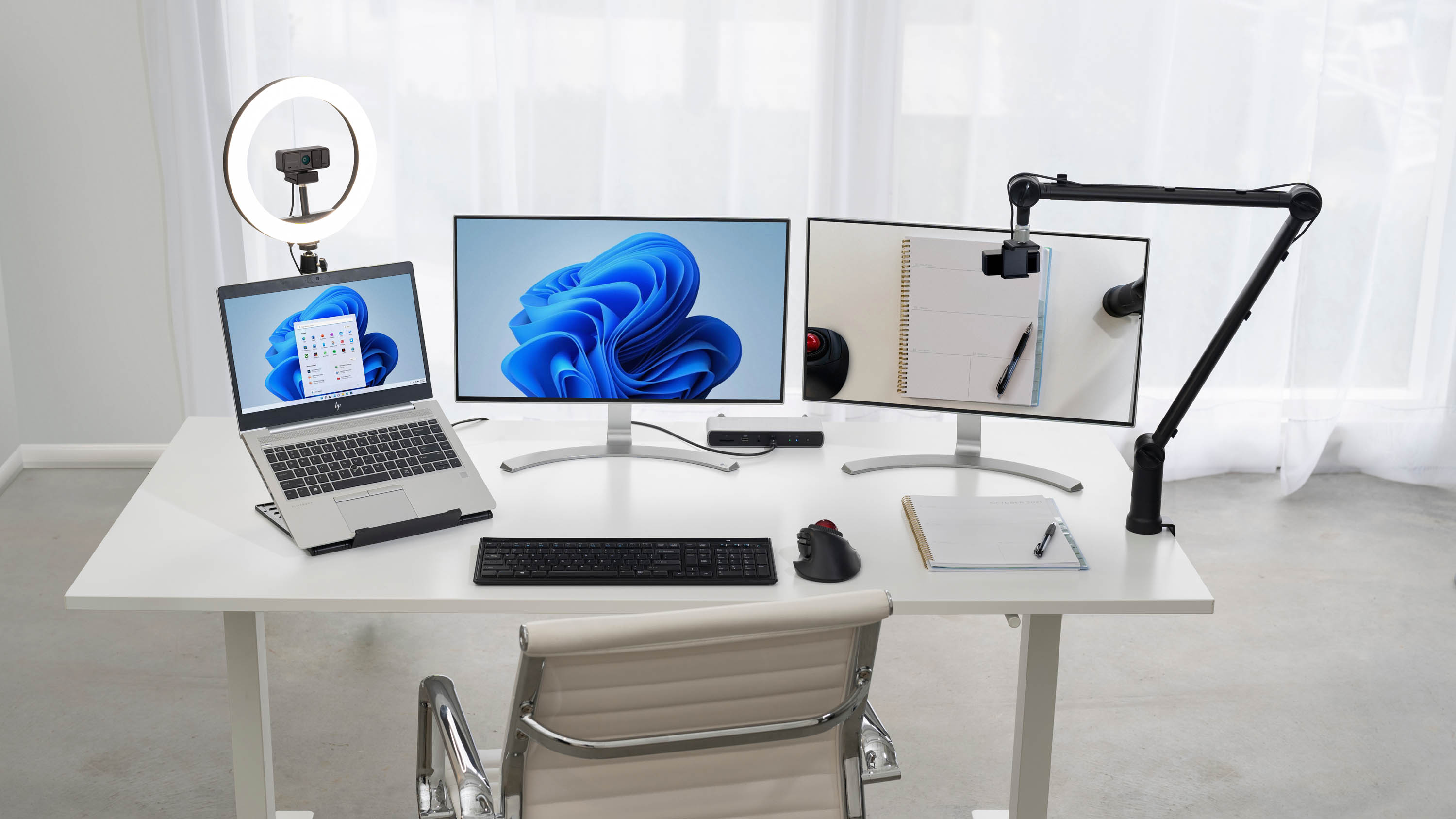
Kensington offers many camera options and accessories for its video conferencing kits. The W1050 1080P Fixed Focus Wide Angle Webcam costs a reasonable $49.99. The W2000 1080P Auto Focus Webcam is a small step up and costs $59.99, while the W2050 Pro 1080P Auto Focus Webcam retails for $89.99. The W2050 has a larger sensor for better low light performance, glass lens, and autofocus than the W1050.
Accessories for these cameras include the L1000 Bicolor Ring Light with Webcam Mount ($39.99), A1000 Telescoping C-Clamp ($44.99), A1010 Telescoping Desk Stand ($29.99), and the A1020 Boom Arm ($89.99).
The complete setup for this review costs $120.
All these components are available through Kensington’s website and retail partners.
Kensington Professional Video Conferencing: What You’ll Like
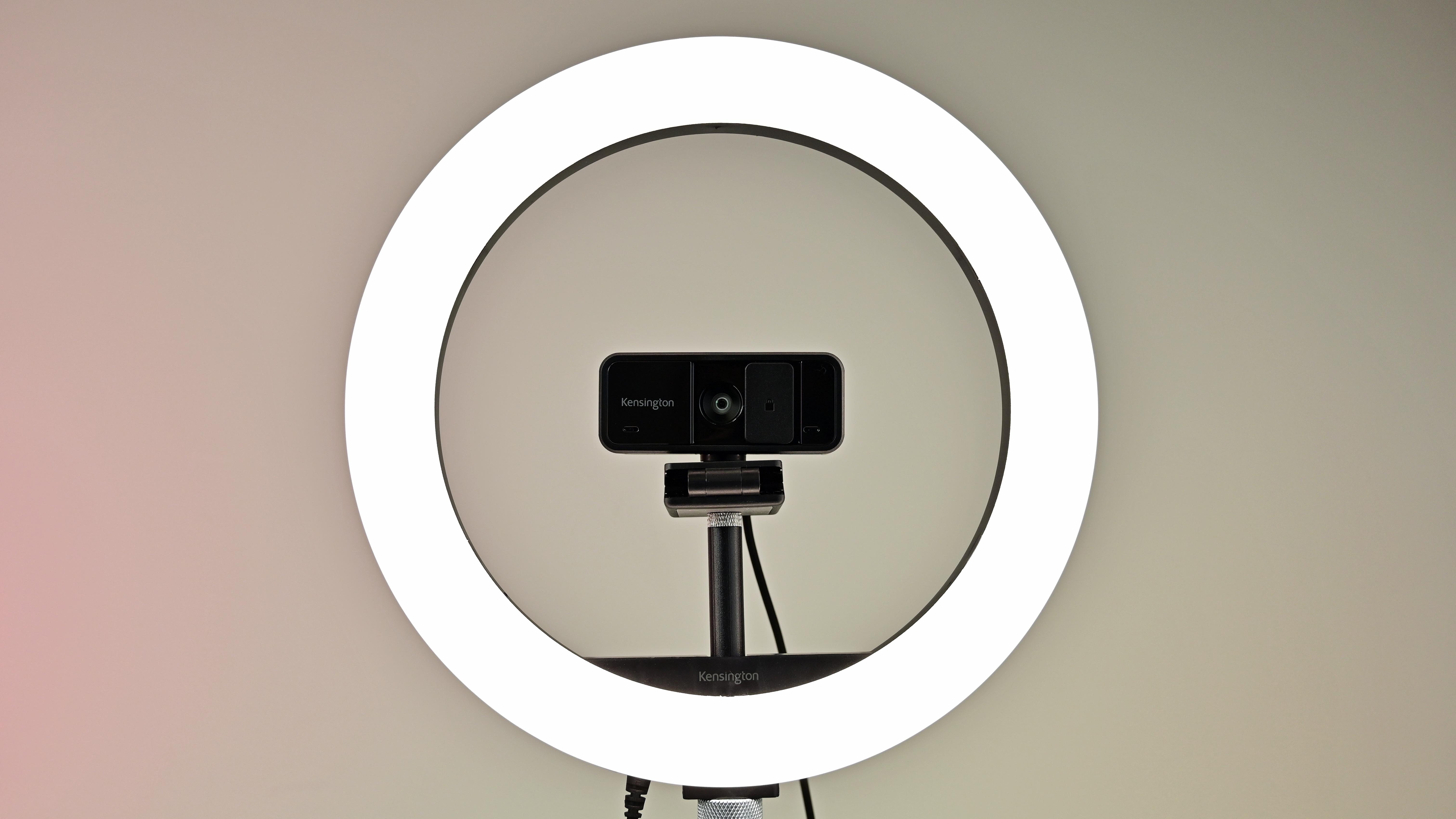
The beauty of Kensington’s kits is that all the parts work together and offer a complete setup with many options depending on your desk or office layout.
The W1050 1080P Fixed Focus Wide Angle Webcam is on the basic side but has some excellent features. The fixed focus glass lens ensures sharp focus even in low-light or high-contrast environments. It can manually adjust 37 degrees vertically and 360 degrees horizontally to provide the best camera angles. It has a wide, 95-degree field of view and a built-in lens cover that slides into place and locks. Two omnidirectional microphones with noise-reduction tech deliver decent quality audio. The camera even meets MIL-STD-810H Method 504.3 Contamination by Fluids testing, meaning it won’t degrade when using bleach or alcohol to disinfect it.
All the Kensington web camera options are powered by USB Type-A and can work on any desktop or laptop PC.
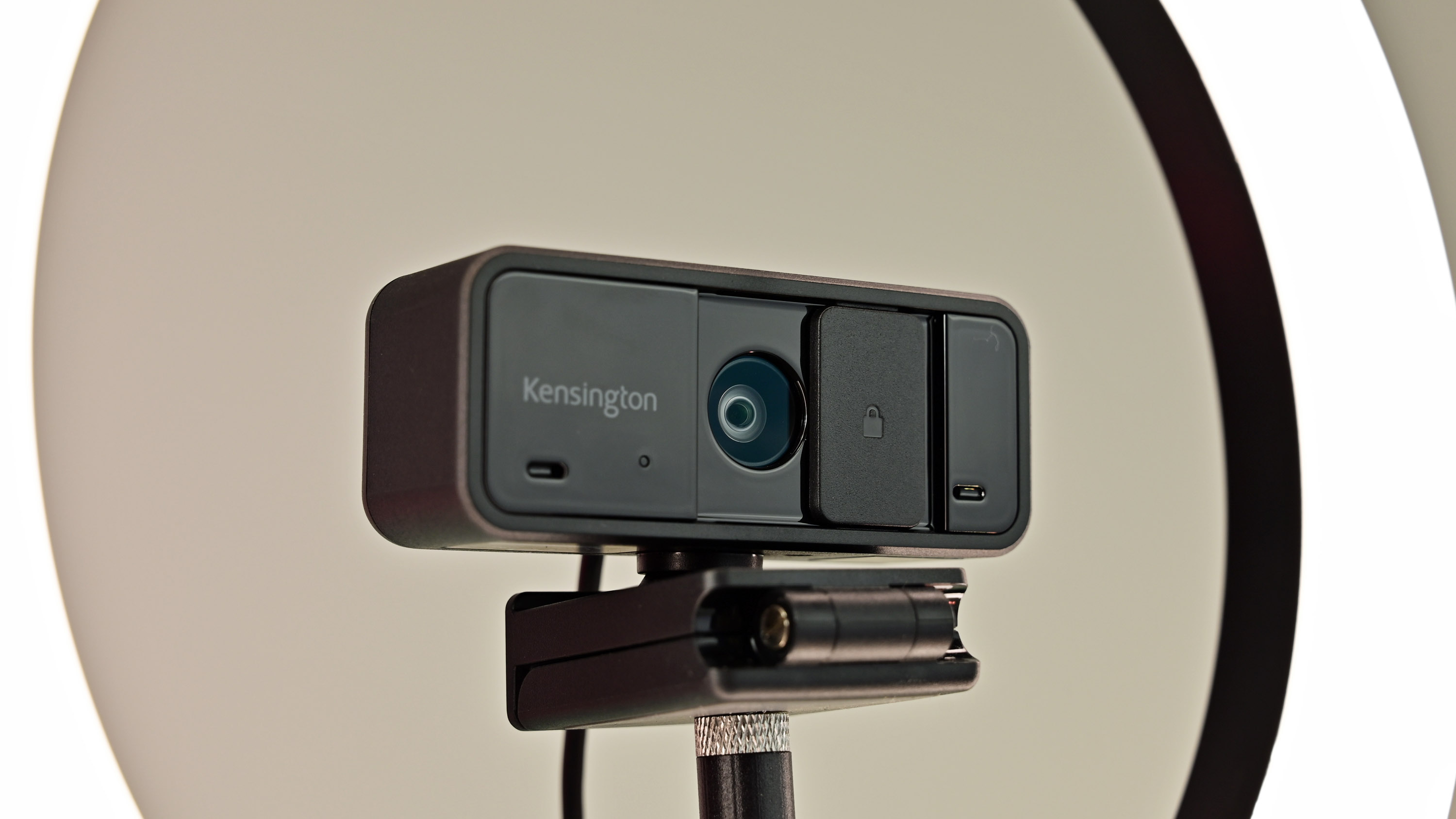
The L1000 Bicolor Ring Light with Webcam Mount needs a stand to put it on, which can either be the A1000 Telescoping C-Clamp, A1010 Telescoping Desk Stand, or the A1020 Boom Arm. We used the desk stand, which is likely the most common configuration.
The ring light is very good, delivering 930 lumens of adjustable brightness. The webcam mounts in the middle, giving evenly distributed light onto the user’s face. More interestingly, you can adjust the temperature range (cool, natural, or warm) due to the bicolor LEDs. This is all controlled via the in-line remote, part of the USB Type-A cable. Any laptop with a standard USB Type-A port can power this ring light.
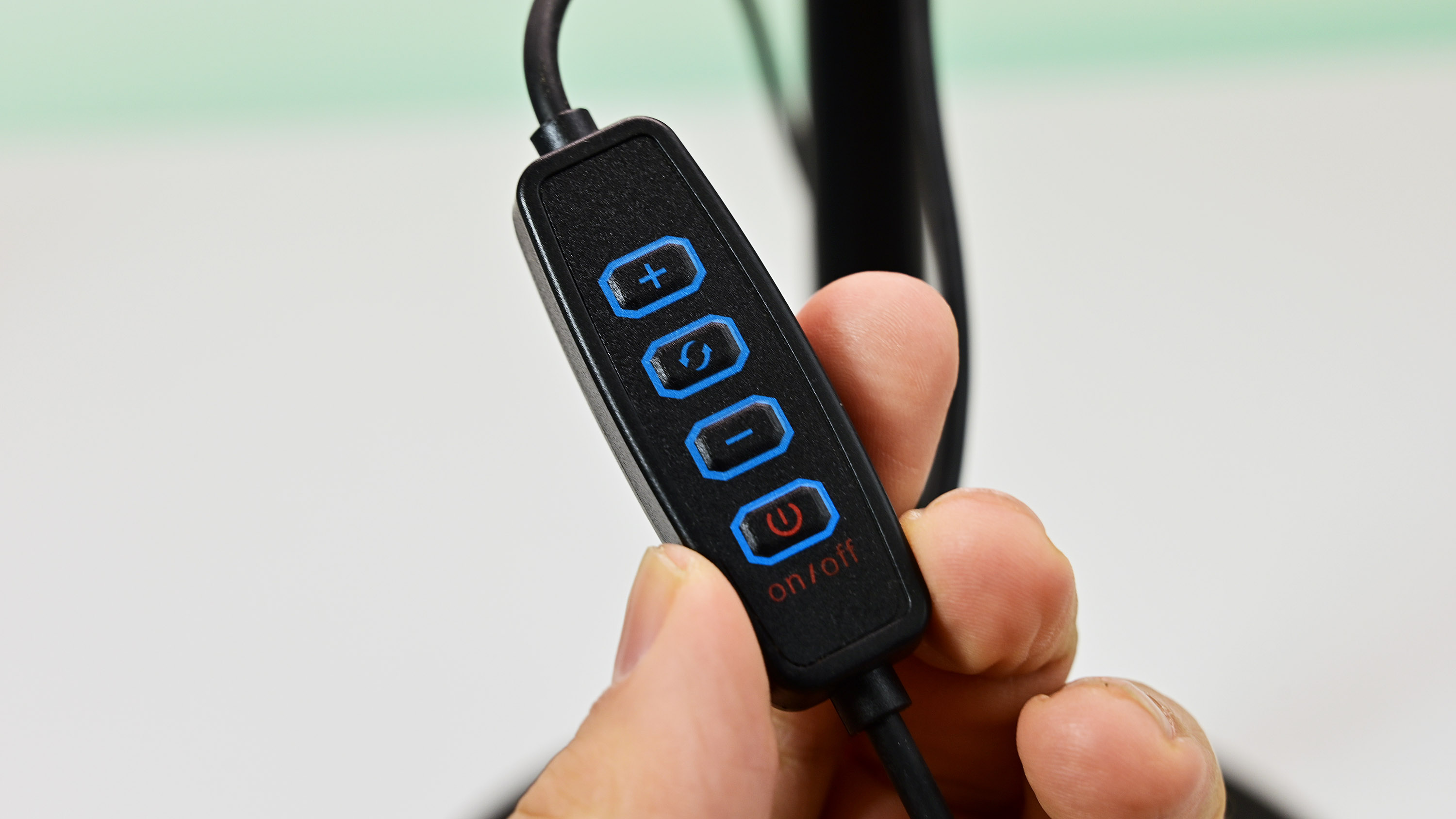
There’s not much to say about the A1010 Telescoping Desk Stand as it’s a generic design that gets the job done. It has a heavy, rounded 7-inch non-skid metal base and main arm with a rotating plastic clamp to lock it into place. I was worried that the height wouldn’t be enough ranging from 11.8 to 19-inches, but it’s enough to completely clear a 34-inch monitor. There’s also a small plastic cable management clip to keep the camera and ring light’s cables in check.
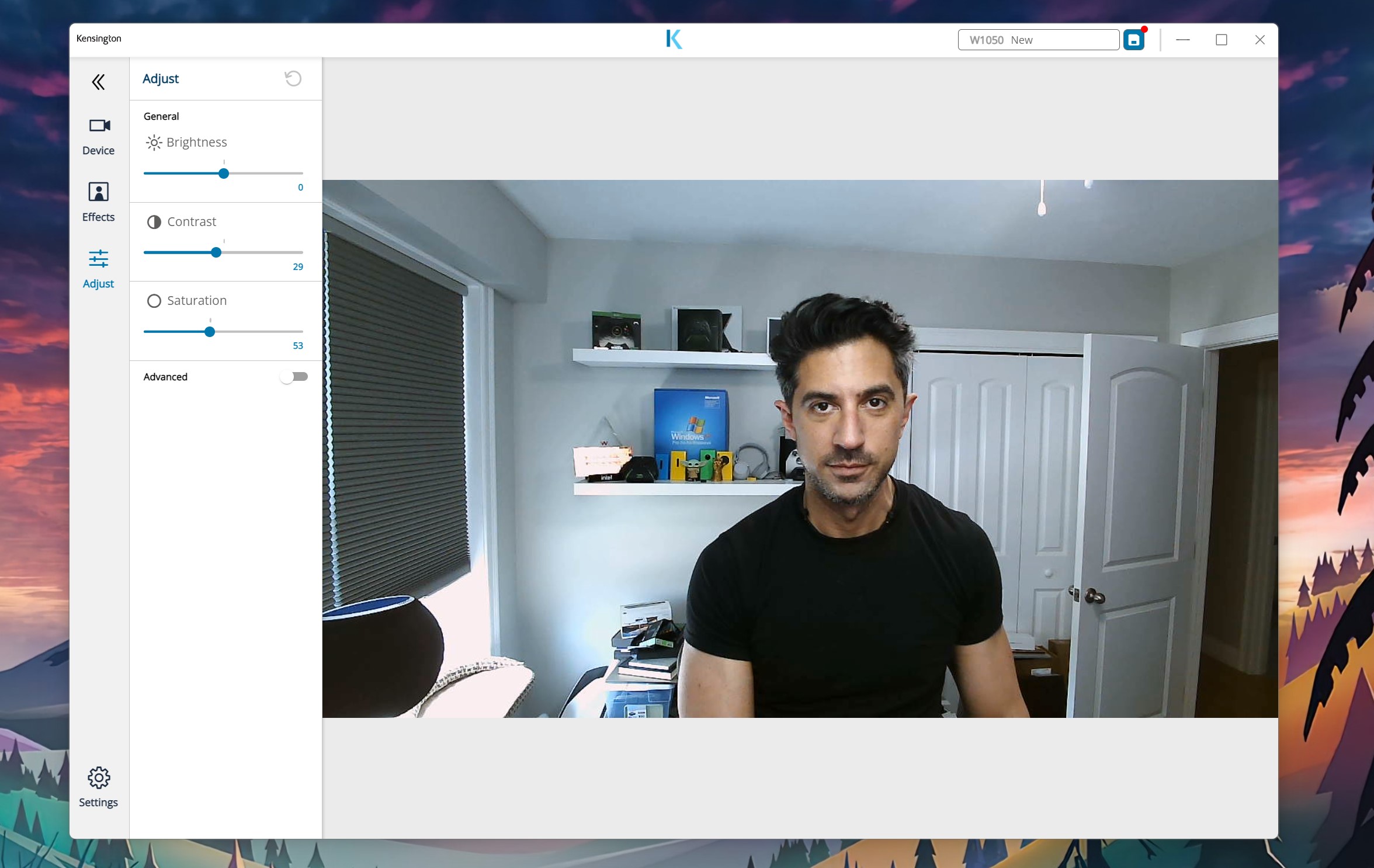
The Kensington Konnect software lets users modify the camera in real-time. You don’t need the software to use the camera, but it does offer friendly options. It has choices of effects (e.g., vibrant, cool, warm, stylish), which are generic but acceptable. Users can manually adjust brightness, contrast, saturation, low-light, backlight, exposure, hue, and more with simple sliders. There is also the ability to zoom in and pan and tilt via software to find the right look and angle for your online meeting. You can also create profiles for various preferred setups.
Kensington Professional Video Conferencing: What You Won’t Like
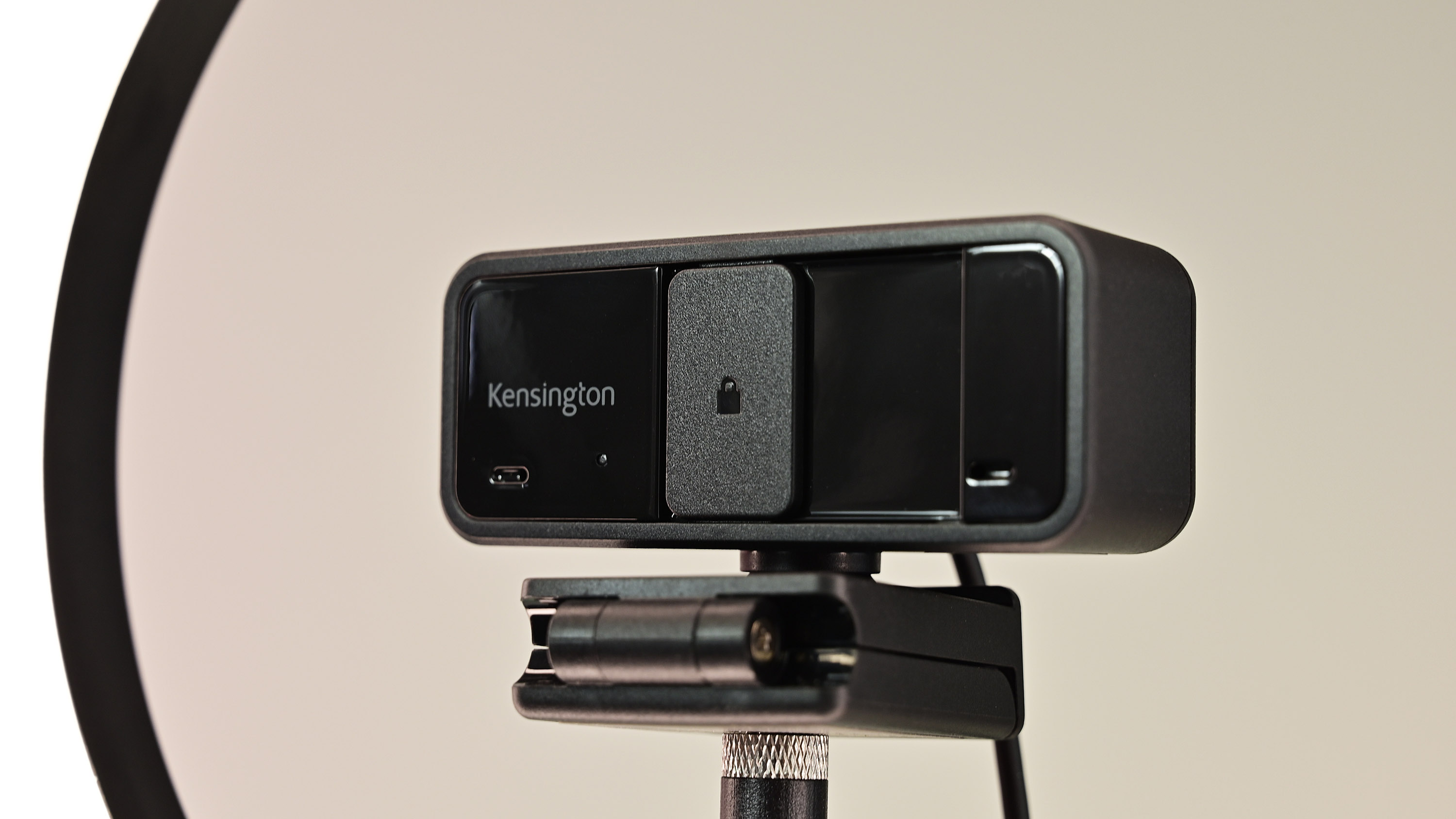
There’s not too much wrong with the Kensington W1050 webcam, at least not at the $50 price point. It won’t compete with the Logitech BRIO 4K or Lumina AI camera, but in well-lit situations, the full HD resolution is good. The fixed focus means everything is always in focus and looks sharp.
One significant limitation of this camera is its wide field of view, making it suitable for single-person video calls unless you want to show off your entire home office.
The ring light’s 930 lumens help illuminate the subject’s face compared to not having it, but it won’t do that much if in a dark room, meaning you still would want to have some residual lighting to assist.
Kensington Professional Video Conferencing: The Competition
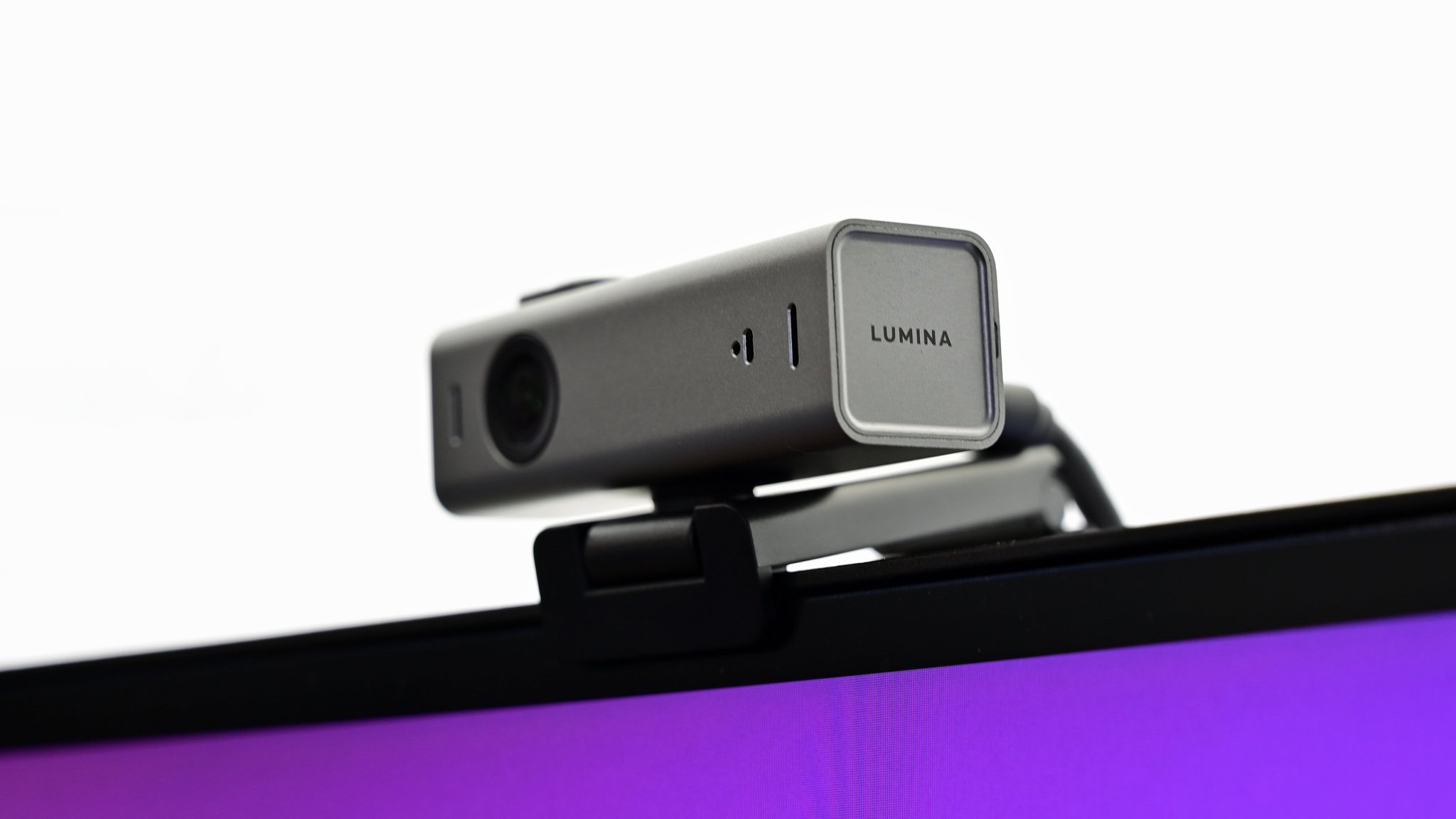
Since the pandemic, many companies have been trying to capitalize on video conferencing technology, so there is much more competition today.
Keeping in mind the price point of $50 for the webcam, there are a few similarly priced options. The HP 325 full HD Webcam for Business is only $39. It’s sharp, has a 66 degrees wide-angle lens (making it better for single-user video calls), requires no software, and has a swivel head letting it freely move around in all directions to find the perfect angle.
Microsoft also has its $55 Modern Webcam, which seems to get better low-light performance and is also full HD.
Going up in price, Kensington has the W2000 1080P Auto Focus Webcam and the W2050 Pro 1080P Auto Focus, which bring a few more features for an extra $10 or $30, respectively.
The Konftel Cam 10 ($83) is also full HD with a 90-degree field-of-view. It has a decent color balance, and the microphones are excellent.
There is the well-received Lume Cube for the ring light, which is much brighter with more range for color temperature. It costs $89, much more than the $40 for Kensington’s ring light, but it also includes a telescoping tripod and laptop mount (suction cups). When you factor in the Kensington desk stand ($30) and the ring light, it’s a comparable $70, $20 less than the Lume Cube Broadcast Lighting Kit.
You can get more ideas in our best webcam for Windows PC guide.
Kensington Professional Video Conferencing: Should you Buy?
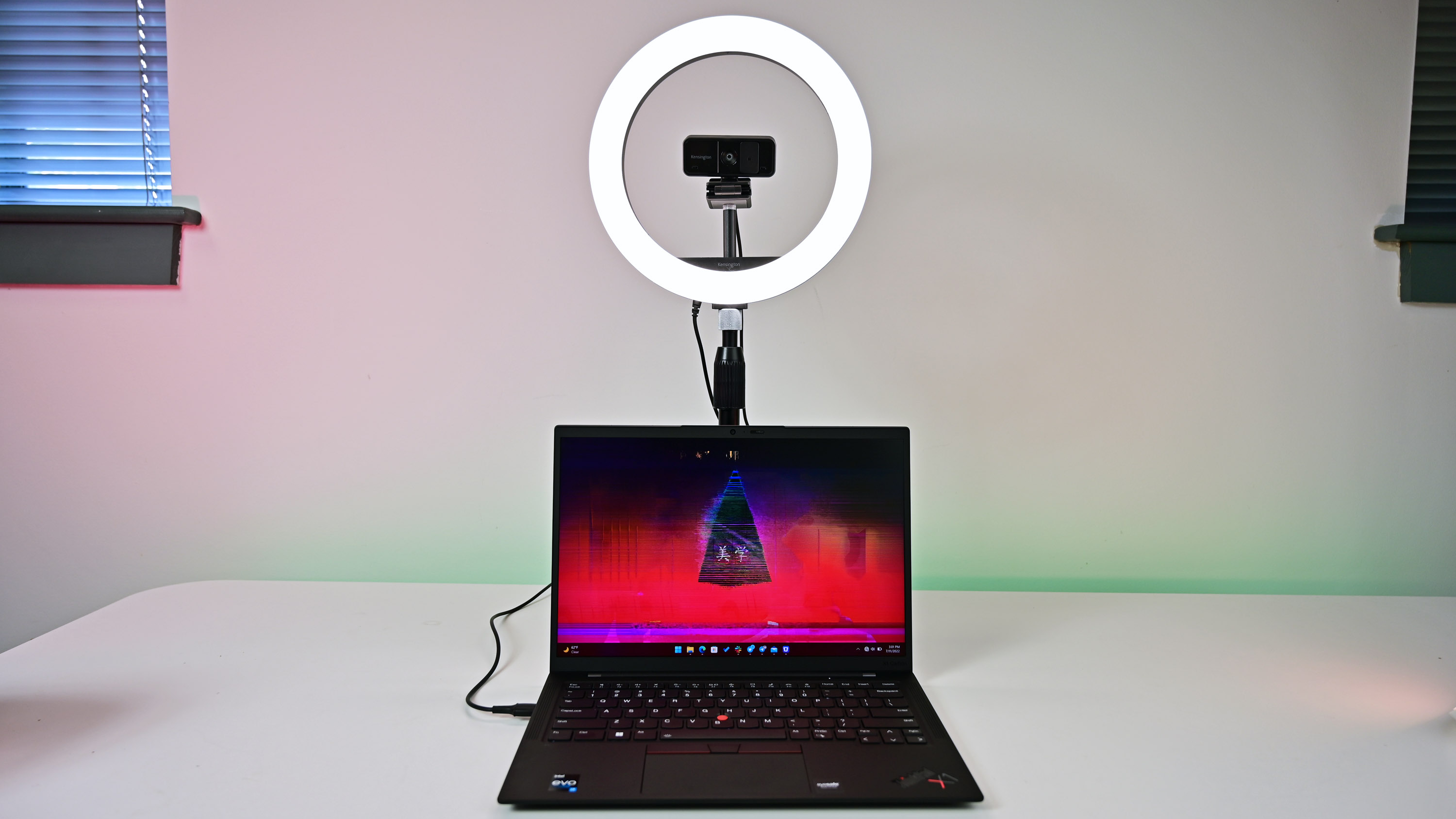
You should buy this if ...
- You want a no-frill, easy-to-setup video conferencing kit
- You want a decent wide-angle full HD webcam
- You want Kensington’s support and a 2-year warranty
You shouldn't buy this if ...
- You do single-person video calls or want a more cropped look
- You work in a dimly lit room and need more lumens
- You want 60 FPS or 4K video
- You need a good built-in mic
Overall, the Kensington Professional Video Conferencing is an ideal option for small businesses and enterprises where the mass deployment of webcams for the office or those working from home is necessary. The ability of the IT department to easily buy these kits and support them is a big selling point, especially since it will be a consistent experience.
The Kensington W1050 gets decent image quality, particularly for the price and the ring light is very enjoyable to use, even if used as additional illumination.
Kensington’s kit is easy to recommend when you factor in the price. And if you need more quality, its other two new webcams are also suitable options.

Daniel Rubino is the Editor-in-chief of Windows Central. He is also the head reviewer, podcast co-host, and analyst. He has been covering Microsoft since 2007 when this site was called WMExperts (and later Windows Phone Central). His interests include Windows, laptops, next-gen computing, and wearable tech. He has reviewed laptops for over 10 years and is particularly fond of 2-in-1 convertibles, Arm64 processors, new form factors, and thin-and-light PCs. Before all this tech stuff, he worked on a Ph.D. in linguistics, performed polysomnographs in NYC, and was a motion-picture operator for 17 years.
